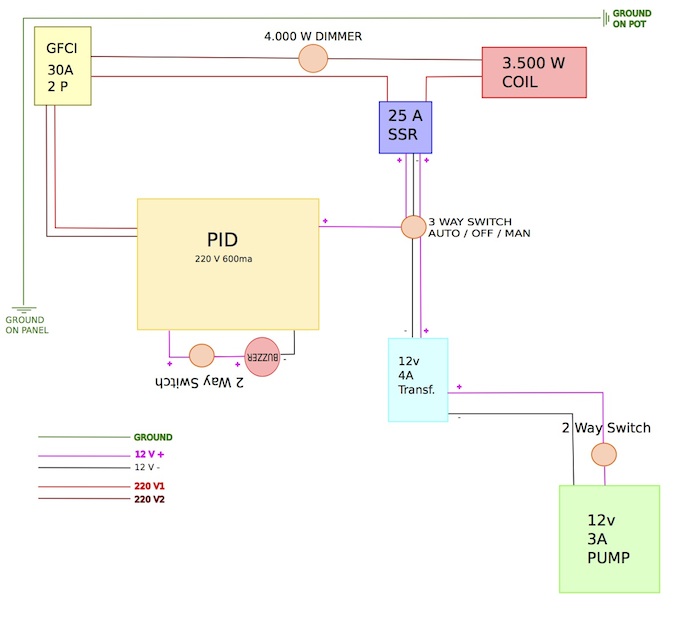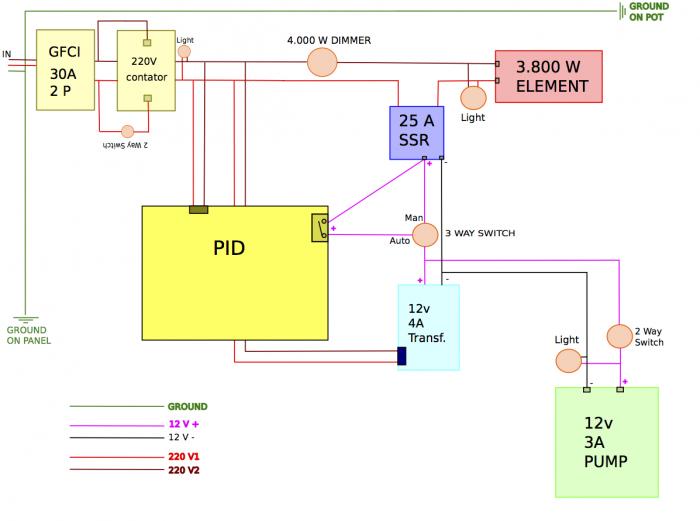Folks,
I`m building a 10 gallon single vessel system (like braumeister) but I have a few serious issues and i`m requesting all help you can give!!!!
The first and most serious problem is that i live in an apartment that has 220 V outlets limited in 20A and NO NEUTRAL. All those wirings are 4mm BUT I`m FORBIDEN to make any changes in this setup.
So I cannot have 220V+110V+Ground at the same time and the overall power input is low. I have a 12V 3A food grade pump with flow control that i`m planning to use, a REX C700 PID and a few low consuming signaling lights.
Due to my limitations I designed it with a 3.200W coil (220v - 14.5 A), pump (12v - 3A), PID (220v - 600ma).
The second problem is that i have a GVCI rated 32A - 30ma, but i pretend to use it as a human safety device, not peak protection. My doubt is if it will work on this setup and if I`ll be protected.
PLEASE I count on your knowledge and experience to help me to put this setup wright and don't burn my old house or burn myself.
Dear GOD P-J if you can listen to this humble mortal I beg for your help!
Thanks
Fabrizio
View attachment ELECTRIC LAYOUT.pdf
I`m building a 10 gallon single vessel system (like braumeister) but I have a few serious issues and i`m requesting all help you can give!!!!
The first and most serious problem is that i live in an apartment that has 220 V outlets limited in 20A and NO NEUTRAL. All those wirings are 4mm BUT I`m FORBIDEN to make any changes in this setup.
So I cannot have 220V+110V+Ground at the same time and the overall power input is low. I have a 12V 3A food grade pump with flow control that i`m planning to use, a REX C700 PID and a few low consuming signaling lights.
Due to my limitations I designed it with a 3.200W coil (220v - 14.5 A), pump (12v - 3A), PID (220v - 600ma).
The second problem is that i have a GVCI rated 32A - 30ma, but i pretend to use it as a human safety device, not peak protection. My doubt is if it will work on this setup and if I`ll be protected.
PLEASE I count on your knowledge and experience to help me to put this setup wright and don't burn my old house or burn myself.
Dear GOD P-J if you can listen to this humble mortal I beg for your help!
Thanks
Fabrizio
View attachment ELECTRIC LAYOUT.pdf








